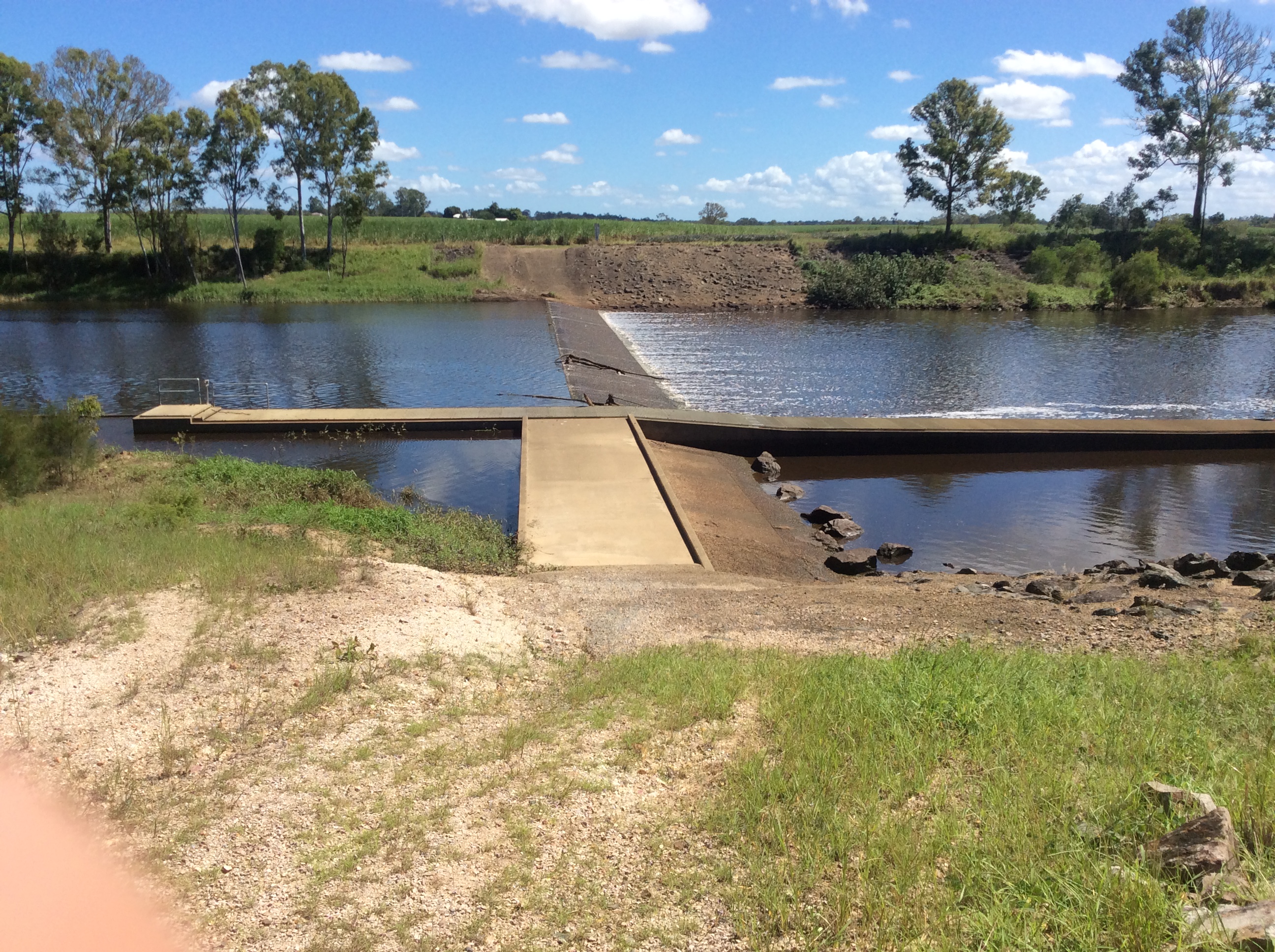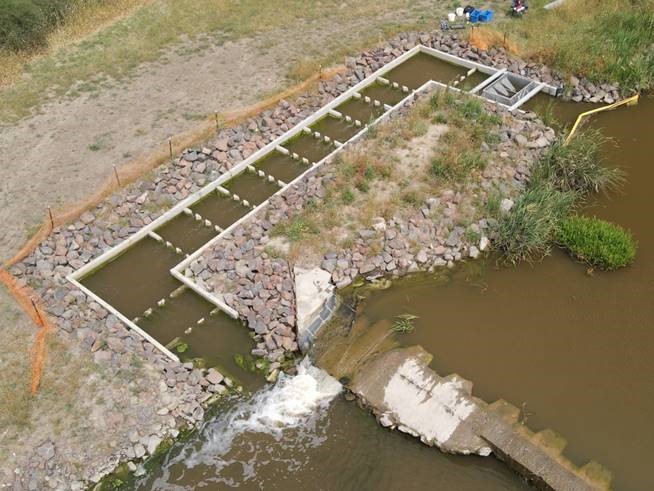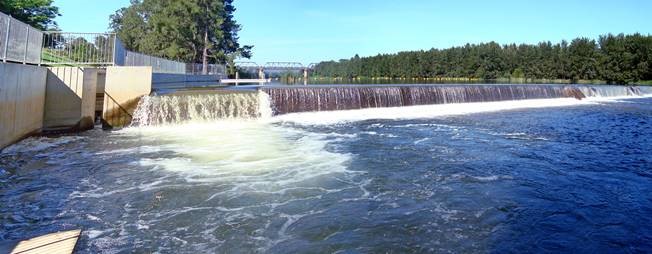|
|
Biopassage structures (fishways)Biopassage structures (e.g. fishways (fish ladders) and fish-friendly culverts) can be constructed to help provide adequate movement of fish and other aquatic fauna past large waterway barriers (e.g. dams, weirs, and tidal barriers/bunds). Smaller barriers such as culverts and road crossings can also be enhanced for biopassage using simple modifications such as rock ramps. Information about biopassage structures for Queensland can be found on WetlandMaps. 
Quick facts
The design of structures to assist biopassage has evolved over time. Many initial designs were based on northern hemisphere fishways that were designed for stronger, larger, adult fish such as Atlantic salmon (e.g. pool and weir fishways or fish ladders). Many Australian fish species migrate as juveniles and do not possess the strength to ascend fish passage structures that may be designed for adult stronger fish. Without designs that are specific to the local fish populations that need to move, fish passage structures run the risk of becoming barriers instead. Biopassage structures tend to be engineered for larger barriers such as weirs or dams, and include structures such as fish lifts (mechanical designs) or vertical slot fishways. Other fish passage structures in Queensland are designed for barriers under 4 metres in height[1] including rock ramps, cones, bypass channels or enhancing culverts to be fish-friendly (e.g. by adding baffles). Even small enhancements to barriers can make a significant difference. The removal of artificial instream barriers is another option for providing passage by restoring connectivity. It involves reinstating an open channel, allowing all species and size classes of fish to move at all flows.
Principles for effective passage
Biopassage structuresMost biopassage structures in Queensland are currently designed for fish and include the following types: Rock ramp fishways
Vertical slot fishways
Cone fishways
Bypass fishways
Trapezoidal fishways
Denil fishways
Pool and weir fishways
Mechanical fishways
Fish-friendly culverts
Removal of barriers
Pages under this sectionReferences
Last updated: 10 May 2021 This page should be cited as: Department of Environment, Science and Innovation, Queensland (2021) Biopassage structures (fishways), WetlandInfo website, accessed 8 May 2025. Available at: https://wetlandinfo.des.qld.gov.au/wetlands/management/fish-passage/technologies/ |

 — Department of the Environment, Tourism, Science and Innovation
— Department of the Environment, Tourism, Science and Innovation



